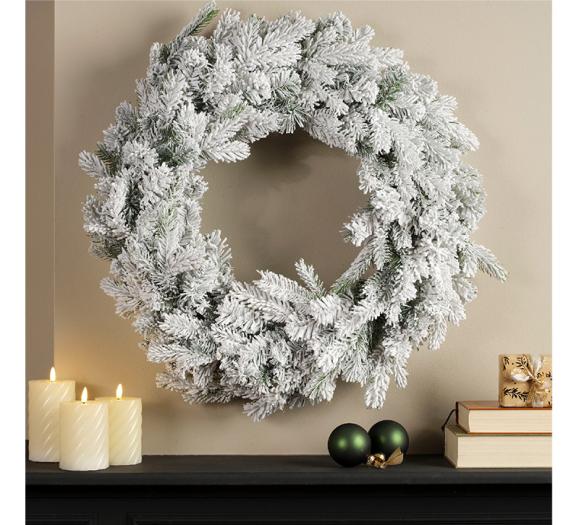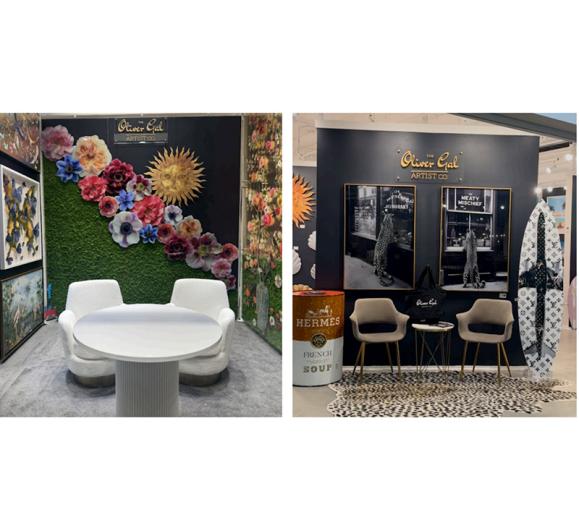The fall edition of High Point Market always feels like the end of the year, even though there are still two months left in it. All the new products are out, and retailers, interior designers and manufacturers start planning for the upcoming year and all that it entails.
Now that the market is over, we reflected on the people we saw, conversations we had and the trends — both style- and business-related — we saw develop. Here are the three big takeaways from High Point Market that should be on your radar heading into next year.
Style returns to the 70s and now 80s
Earlier this year, we noticed a retro trend starting to emerge after winter markets, with brighter colors, deeper brown tones and patterns playing out on decor, furniture and even lighting. That trend continued through High Point Market this fall, and even went a few steps further.
Texture seemed to be the hot word for the market. Whether it was pillows, upholstery or table lamps, new products had a textural appeal to them, whether that was fringe on pillows or embroidery on upholstered accent chairs. Though velvet — a fabric that begs to be touched — remained strong, some manufacturers used cut-out sections of velvet on linen or silk backgrounds to give the chairs two textures.
In fact, chairs with two textures — a leather on the seat and a hair-on-hide wrapping around the back, for instance — were also common in many showrooms.
As this was all playing out, we noticed another style starting to rev up — the 80s. Momeni's Madcap Cottage collection represents this trend perfectly. The collection featured big florals and other classic patterns in muted reds, blues and yellows. In the showroom, the collection was referred to as "updated Laura Ashley."
Other showrooms introduced patterned fabrics and chinoiserie-inspired pieces, hinting that more may be coming next year if the response is favorable.
Tariffs have everyone scrambling
Most High Point Market goers are likely sick of hearing and talking about tariffs, but now is not the time to let it all go. As we reported earlier during High Point Market, many of the manufacturers we spoke with have decided to absorb the cost of the 10 percent tariff that went into effect in late September, but if the tariff on $200 billion imported Chinese furniture and lighting products increases to 25 percent as it is expected to on Jan. 1, 2019, retailers will have to shoulder some of the cost.
A fork in the road may be coming for home furnishings and lighting retailers with this new round of tariffs, which will affect not only furniture and lighting products but also consumer essentials like food and toilet paper. As a result, many consumers who would ordinarily not need to shop on price may be forced to do so, and as lighting retailers facing IMAP issues know very well, that can create a sort of race-to-the-bottom and erode margins and consumer trust in showrooms.
The successful retailers will likely carve out some sort of niche for themselves and use it to provide an added value or experience that consumers will value over the ease of ordering online. Retailers that maintain a we-sell-to-everyone-and-every-thing mentality and do not use the digital tools available to them will find themselves struggling to bring consumers offline and into stores.
The business of interior design may be shifting
At one panel on the business of interior design, a designer asked the panelists why she needed to be transparent about her pricing when other industries did not. Restaurants, for example, never state what they pay for their beef and how they justify the prices of the steaks, so why did interior designers need to justify their margins and fees?
Many around her nodded, and the panelists agreed. They too felt it was unfair, but whether it was fair or not didn't matter. The fact is that consumers are savvier about pricing and sourcing than ever before. Like it or not, this is how the industry is today, and if you're not upfront and transparent with your clients about pricing and fees, they won't want to work with you.
Much like retailers, the business of interior design appears to be at a crossroads. There seems to be a disconnect between consumers and designers, and the result is that consumers don't understand what an interior design service is or what the benefit of using it is. Sure, you get a well-designed room or home out of it, but if a consumer can order all that product from home, why spend the money hiring someone to do it for you?
Designers, of course, know that sourcing product is just one small aspect of their work, but those that assume consumers know this as well will have a tough time in the future.
In speaking with designers and listening to seminar speakers, it seems that the more successful approach will be selling interior design services as an experience. Again, finding the niche will be crucial, and using technology to make the experience more fun, tangible or convenient (think e-design services) will draw clients off the internet.
In the coming issues, Furniture, Lighting & Decor will be covering all these topics and more in our editorial coverage. Which topic most interests you? Share with us in the comments!







